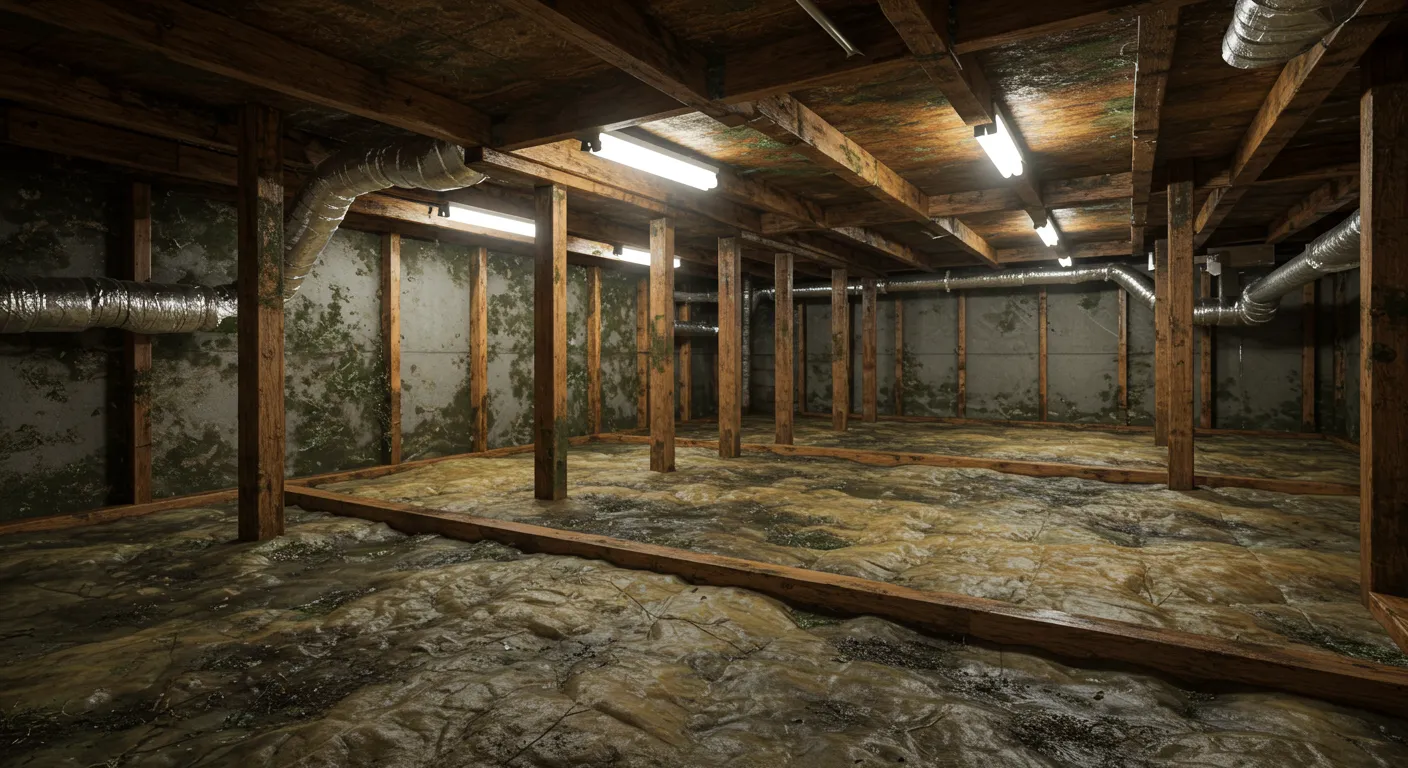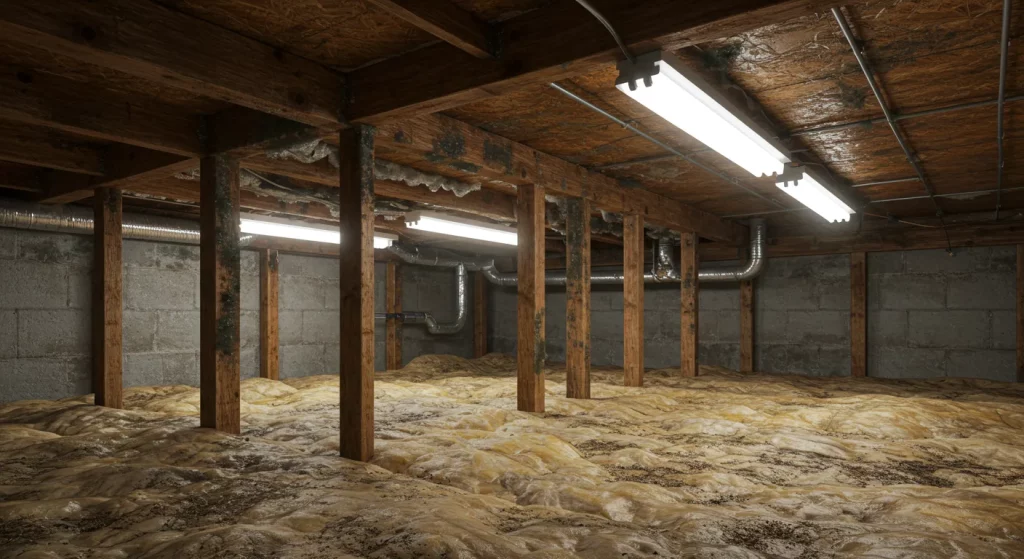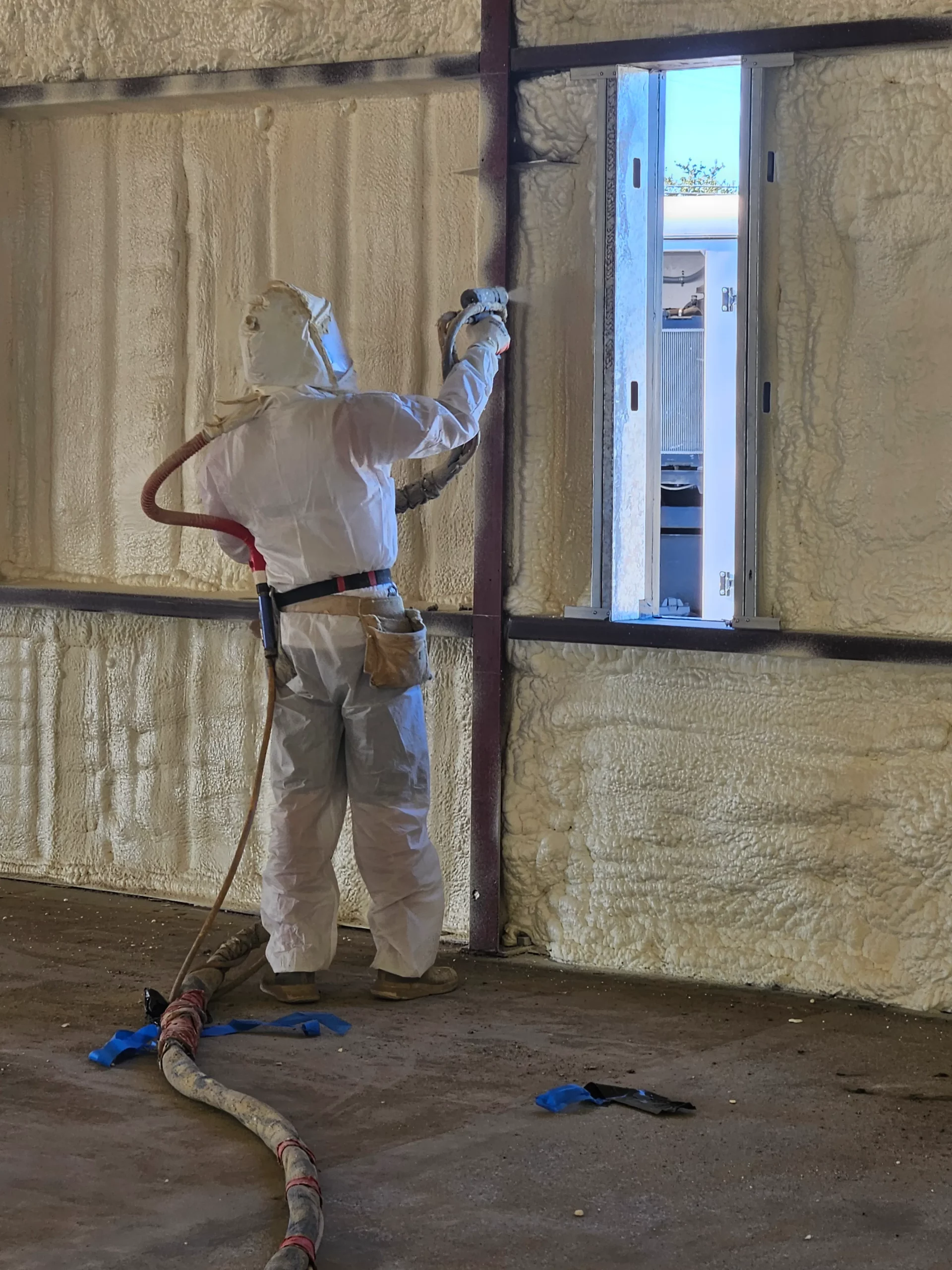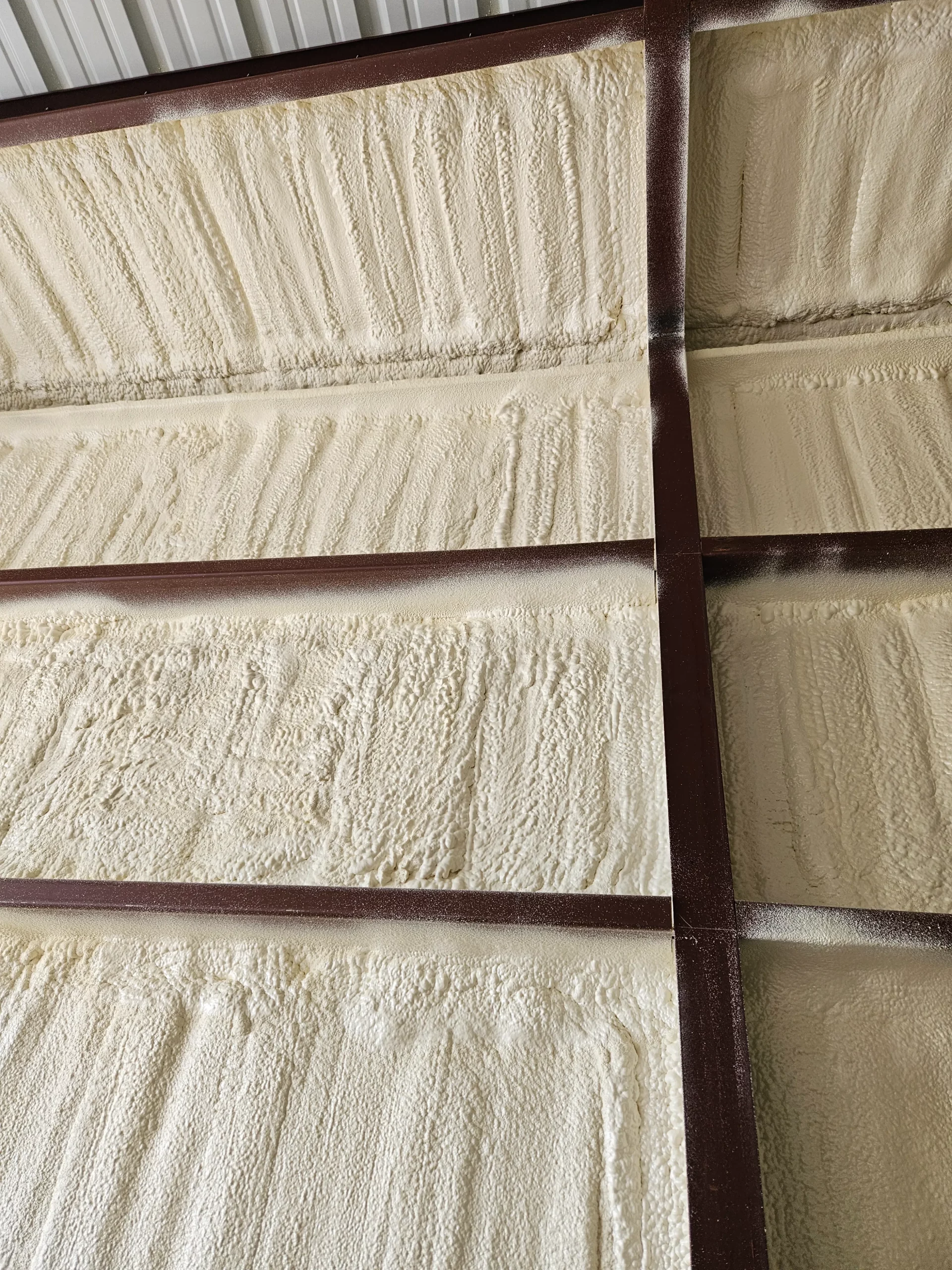

Spray foam insulation prevents moisture and mold in Leander crawl spaces by sealing gaps, cracks, and porous surfaces that allow humidity and water vapor intrusion. The closed-cell spray foam variety acts as a continuous vapor barrier, significantly reducing the risk of condensation and microbial growth under homes. Unlike traditional insulation, it doesn’t absorb water or deteriorate when exposed to damp conditions.
In Leander’s humid subtropical climate, crawl spaces without proper vapor control quickly accumulate moisture from the ground and air, often leading to mold colonies. Spray foam insulation eliminates the air exchange and reduces ground moisture ingress, making the environment inhospitable for mold and mildew. This article outlines the science behind the material’s performance, relevant technical data, and key considerations before selecting it for your crawl space.
Spray Foam Tech has installed and removed insulation across hundreds of residential and commercial properties in Central Texas. First-hand experience with product behavior over time under local temperature swings and moisture levels—shapes every recommendation provided here.
Crawl spaces in Central Texas face recurring moisture issues due to:
Soil vapor rises into these unsealed areas, combining with humid air to form condensation. Wood subfloors and joists absorb this moisture, accelerating mold growth and structural degradation.
Use a ground vapor barrier (6-10 mil polyethylene sheeting) beneath spray foam for enhanced results in high-humidity areas.
Closed-cell spray foam insulation works by forming an airtight, moisture-resistant barrier along crawl space walls, rim joists, and subflooring. This controls both air infiltration and vapor diffusion, cutting off the conditions that mold needs to grow.
| Method | Air Sealing | Vapor Barrier | Water Absorption | Mold Resistance | Durability |
|---|---|---|---|---|---|
| Closed-Cell Spray Foam | Yes | Yes | No | High | 20+ Years |
| Open-Cell Spray Foam | Partial | No | High | Moderate | 10-15 Years |
| Fiberglass Batts | No | No | High | Low | <10 Years |
| Rigid Foam Panels | Moderate | Yes | Low | Moderate | 15-20 Years |
Closed-cell spray foam has the lowest moisture permeability and highest adhesion to uneven crawl space surfaces. It doesn’t sag or break down when exposed to dampness.
| Property | Closed-Cell Spray Foam | Reference Standard |
|---|---|---|
| Water Absorption | <0.5% by volume | ASTM D2842 |
| Water Vapor Transmission | <1.0 perm (Class II vapor retarder) | ASTM E96 |
| Air Permeability | <0.02 L/s-m2 @ 75 Pa | ASTM E283 |
| Mold Resistance | No growth observed | ASTM G21 |
| R-Value per Inch | 6.5–7.0 | ASTM C518 |
Sources:
In Leander, the main threats to crawl space integrity come from spring rains, sudden temperature drops, and high summer humidity. Spray foam helps in these conditions by:
This makes it suitable not just for new builds, but also for retrofits in existing homes dealing with chronic musty smells or recurring mold cleanup.
In older Leander homes with pier-and-beam foundations, apply foam to the underside of subfloors not ground when there’s minimal clearance. Avoid blocking natural drainage pathways.
Closed-cell spray foam lasts 20–30 years when installed correctly and protected from UV exposure and direct water contact.
It significantly reduces air leakage. Complete airtightness requires sealing vents and installing vapor barriers.
Spray foam is not a food source, but rodents can chew it if attracted. Integrated pest control should be part of a full solution.
Poor adhesion and trapped moisture occur. Surfaces must be fully dry before installation.

Spray Foam Tech provides focused insulation services to address crawl space issues:
For crawl space moisture problems in Leander, closed-cell spray foam offers long-term protection and stability. Assess your structure, ventilation, and moisture sources before selecting a solution.
Contact Spray Foam Tech to discuss your insulation goals:
Email: oldworldtx@hotmail.com
Phone: (737) 777-9590
Closed-cell foam is rigid, moisture-resistant, and provides a vapor barrier. Open-cell is softer, allows vapor movement, and offers sound insulation.
After curing, it’s inert and safe. Proper ventilation is required during application.
Insulation reduces surface temperature differences, which limits condensation risk when paired with vapor barriers.
Musty smells, visible mold, soft flooring, or high humidity inside the home often indicate a problem.
Fall and early winter offer stable temperatures and lower humidity for ideal application conditions.


